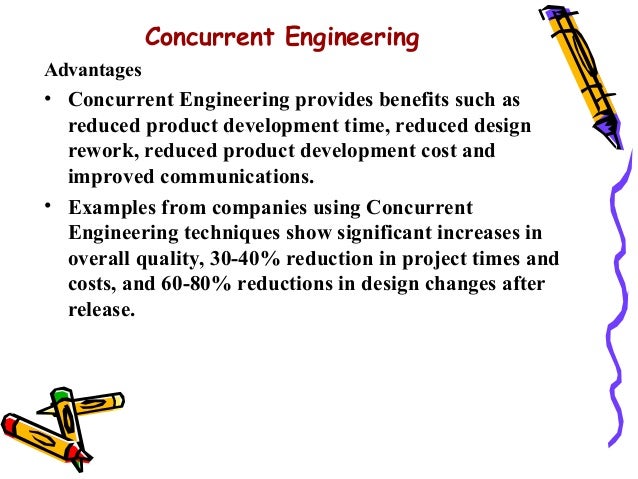Concurrent Engineering Example


Shows concurrent engineering in a small project where the greatest challenge is to facilitate frequent information transfer between the separate functions. An example of such a project is the development of a new soda bottle, in. Concurrent engineering, also called simultaneous engineering, is a process for designing and creating products in which project workers carry out each stage at the same time, rather than one after the other.

Concurrent engineering is a method used in product development. It is different than the traditional product development approach in that it employs simultaneous, rather than sequential, processes. By completing tasks in parallel, product development can be accomplished more efficiently and at a substantial cost savings.
Concurrent Engineering Ppt
Rather than completing all physical manufacturing of a prototype prior to performing any testing, concurrent engineering allows for design and analysis to occur at the same time, and multiple times, prior to actual deployment. This multidisciplinary approach emphasizes teamwork through the use of cross-functional teams, and it allows for employees to work collaboratively on all aspects of a project from start to finish.
Concurrent Engineering Approach Example
Also known as the iterative development method, concurrent engineering requires continual review of a team’s progress and frequent revision of project plans. The rationale behind this creative, forward-looking approach is that the earlier that errors can be discovered, the easier and less costly they are to correct. People who use thi smethod claim that it offers several benefits, including increased product quality for the end user, faster product development times, and lower costs for both the manufacturer and the consumer.
Related News
- Red Dead Redemption Graphics
- Download Microsoft Office 2007 Free Windows 7
- Download Visio 2016 64 Bit
- Lagu Dangdut Palapa
- Yaad Teri Aati Hai Mp3
- How To Unlock Synthesia
- Detective Conan Sub Kissanime
- Spss License Key
- Rihanna Freakin Weekend
- Filmes Youtube Completo Dublado Gratis
- Free Download Film Sub Indonesia
- Twin Star Exorcists Episode 27 English Dubbed
- Casio Fx 991ex Manual Pdf
- Novela Completa Amor Real